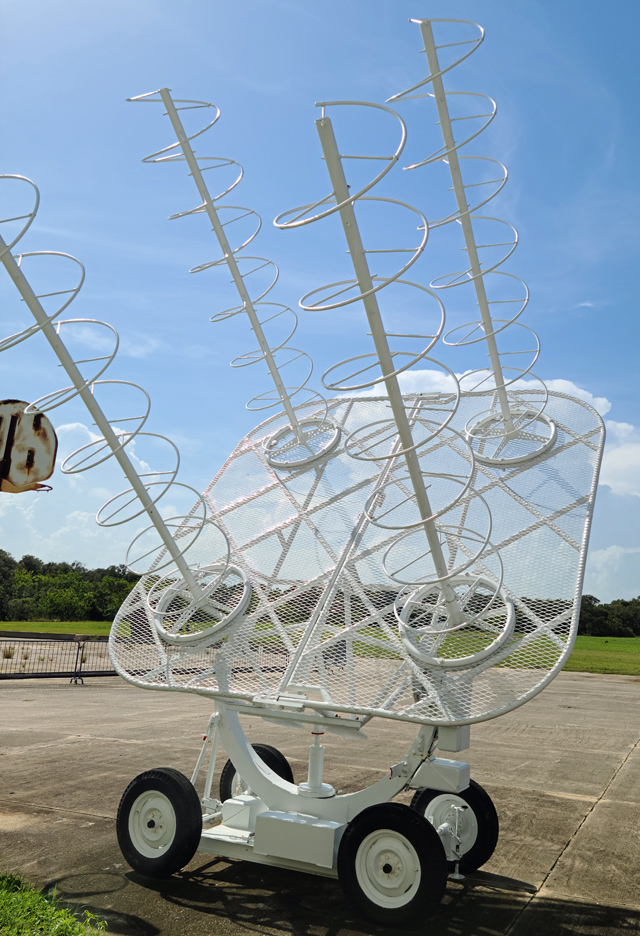
Overview
Display location:
- Hangar C, Cape Canaveral Space Force Station
Type: Range telemetry antenna
Agency: U.S. Air Force, NASA
History
Telemetry antennas were used to support Very-High-Frequency (VHF) and Ultra High-Frequency (UHF) radio transmissions between a missile in flight and ground control stations. The term telemetry refers to the science of automatic data measurement and its transmission by radio from a remote source, like a flying missile or spacecraft, to a fixed location for recording and analysis.
This telemetry antenna has elements that may best be described as looking “spring-like”. This is due to the need for radio wave polarization. Just as light waves can be polarized vertically or horizontally, radio waves used for missile communications can be polarized in a clockwise or counter-clockwise direction. To insure maximum signal strength, the antenna elements must be polarized in the same direction as the radio waves they receive.
The matching of signal strength and polarization between a vehicle in flight and a ground antenna proved to be a great technical challenge. Changes in the flight path, and even the exhaust plume of the vehicle, were known to alter the signal strength and polarization of radio signals, thus easily confusing ground antennas and receivers.
Capabilities
Initially, telemetry capability for Cape Canaveral consisted of a chain of antennas stretching from a central station on Merritt Island to several fixed ground stations located downrange. Telemetry stations were located on the Florida mainland, Grand Bahama Island, Antigua and Ascension Islands.
All of these telemetry stations were equipped with one or more large-aperture antenna, multiple receivers and real-time re-transmission subsystems. In addition to the ground stations, specialized tracking ships and aircraft were used to track and and re-transmit telemetry data to the base station.
The Telemetry Antenna was on display for many years in the museum rocket garden. It was removed for restoration in 2005.